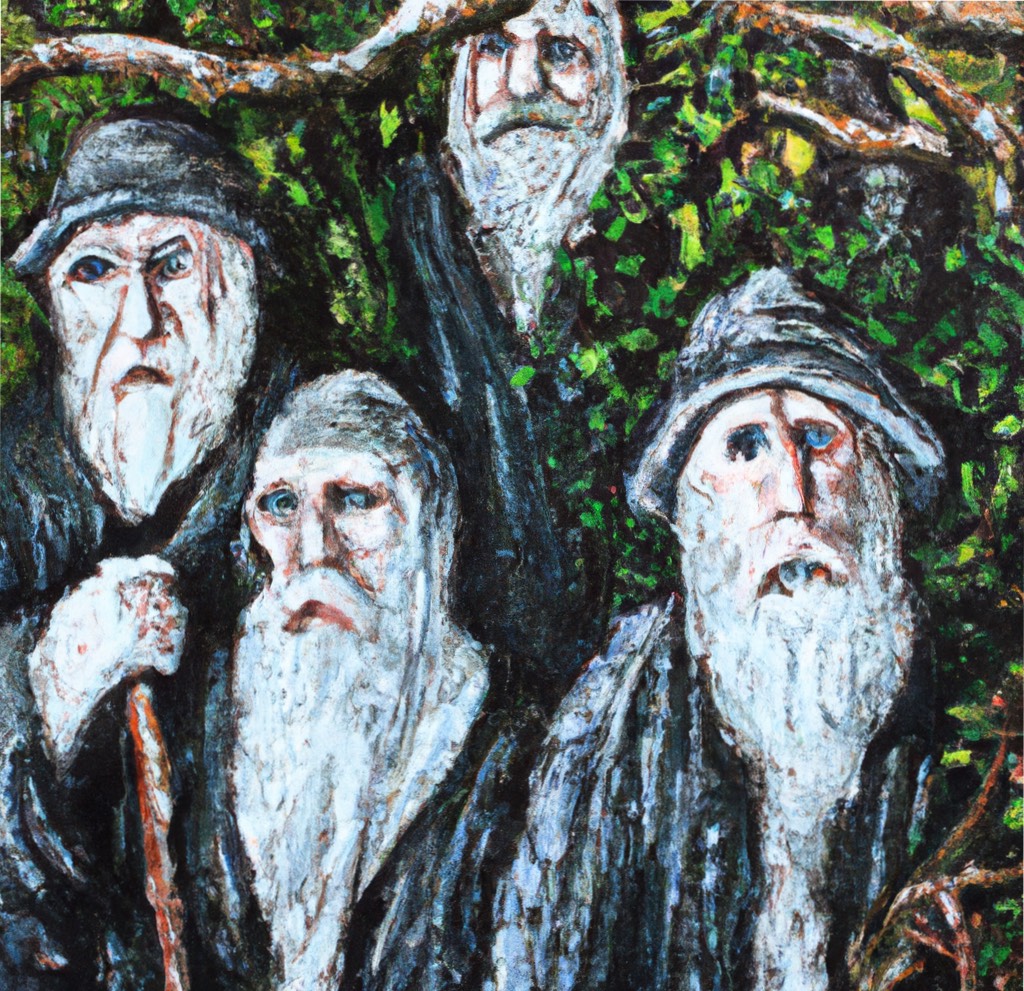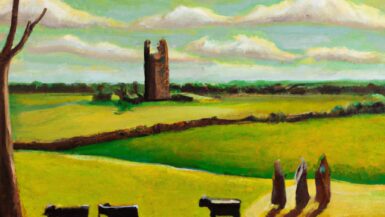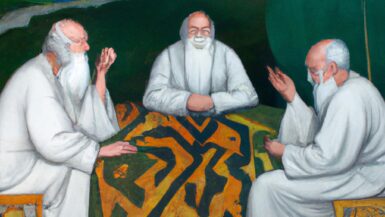The Brehon Laws, known in the Irish language as ‘Fénechas’, meaning the law of the Féne or free men of Gaelic Ireland, is a comprehensive legal system that governed the island for centuries. The depth and breadth of these laws shed light on the socio-cultural fabric of early Irish society, and their development is intertwined with various key figures, notably Druids, Filí, and Brehons.
Pre-Brehon Era and the Role of Druids
Before the written Brehon Laws we know today, the early legal customs and traditions were largely an oral endeavour. At the forefront of this oral tradition were the Druids.
Druids: The Early Custodians of Law
Druids were multifaceted figures in early Celtic societies, serving roles ranging from religious leaders to advisors. Their esteemed position was rooted in their knowledge, which encompassed not just spiritual matters, but also the rudimentary laws of the land.
Druidic Legal Ceremonies
Ceremony and ritual played a significant role in early Druidic legal proceedings. These ranged from divination practices to ascertain the truth in disputes to rituals that sought to restore societal balance after infractions.
Filí: The Poetic Preservers of Tradition
As Druidic influence waned, especially with the onset of Christianity, the Filí, Gaelic poets and scholars, began to occupy a central role in preserving Irish traditions, including legal customs.
The Filí as Chroniclers
Filí were not merely poets; they were chroniclers of history, societal norms, and traditions. In their verse, one could find reflections of societal values and, indirectly, the legal norms that upheld those values.
Filí Schools and the Transmission of Knowledge
The Filí established schools, ensuring that the rich tapestry of Gaelic traditions, including aspects of legal knowledge, was passed from one generation to the next. These schools played a pivotal role in ensuring continuity in a changing world.
The Emergence of Brehons and Written Laws
With societal evolution, the need for a more formalized and accessible legal system grew. Enter the Brehons.
Brehons: The Professional Jurists
Distinct from the spiritually-focused Druids and the poetic Filí, Brehons were specialized jurists. They underwent rigorous training to master the laws, often studying for two decades or more.
Compilation of the Brehon Laws
As the importance of Brehons grew, there was a drive to compile and codify the myriad customs and laws into more structured texts. The resultant manuscripts, such as the Senchas Már and the Book of Aicill, became foundational texts for the Brehon legal system.
Brehon Law Schools
Similar to the Filí, Brehons also established schools, dedicated exclusively to the study of Fénechas. These institutions ensured a consistent interpretation and application of the laws across Gaelic Ireland.
Interplay of Druids, Filí, and Brehons
It’s essential to understand that the transition from Druids to Brehons wasn’t abrupt. There was significant overlap, with each group influencing the other.
Druids and Filí: The Bridge of Traditions
Even as the influence of Druids diminished, many of their traditions and values were preserved and adapted by the Filí. This ensured a continuous thread from pre-Christian Ireland through to the early Christian period.
Filí and Brehons: From Verse to Jurisprudence
While the Filí were keepers of tradition, the Brehons took on the mantle of formalizing these traditions into a structured legal system. The poetic reflections of the Filí on justice, honor, and societal norms undoubtedly influenced the Brehon codifications.
Evolution and Decline of Brehon Laws
Despite their deep roots and comprehensive nature, Brehon Laws weren’t immutable. Over time, external influences, notably from the English legal system, began to exert pressure on the Brehon framework.
Adaptation and Synthesis
For a time, the Brehon Laws adapted, synthesizing new concepts and adapting to the changing socio-political landscape of Ireland.
Supersession and Legacy
By the 17th century, the Brehon Laws were largely supplanted by English legal norms. However, their legacy endured, not just as a historical relic but as a testament to Ireland’s rich legal and cultural heritage.
In essence, the Brehon Laws offer a panoramic view of Ireland’s evolution, from the Druidic ceremonies of ancient times to the legal schools of the Brehons. Through understanding the roles of Druids, Filí, and Brehons, one gains a deeper appreciation of the intricate tapestry of Gaelic Ireland’s legal and cultural landscape.






Did the Brehon Law address sports in any way?
Great articles. I have been looking for information on early Christianity in Ireland, and have found all of the names, places and dates, but very little on how society actually functioned. Your articles provide a much needed glimpse into the more personal aspects of Gaelic Irish life. I would also like to discover how the mineral wealth of Ireland was controlled/managed in those times.
Thank you